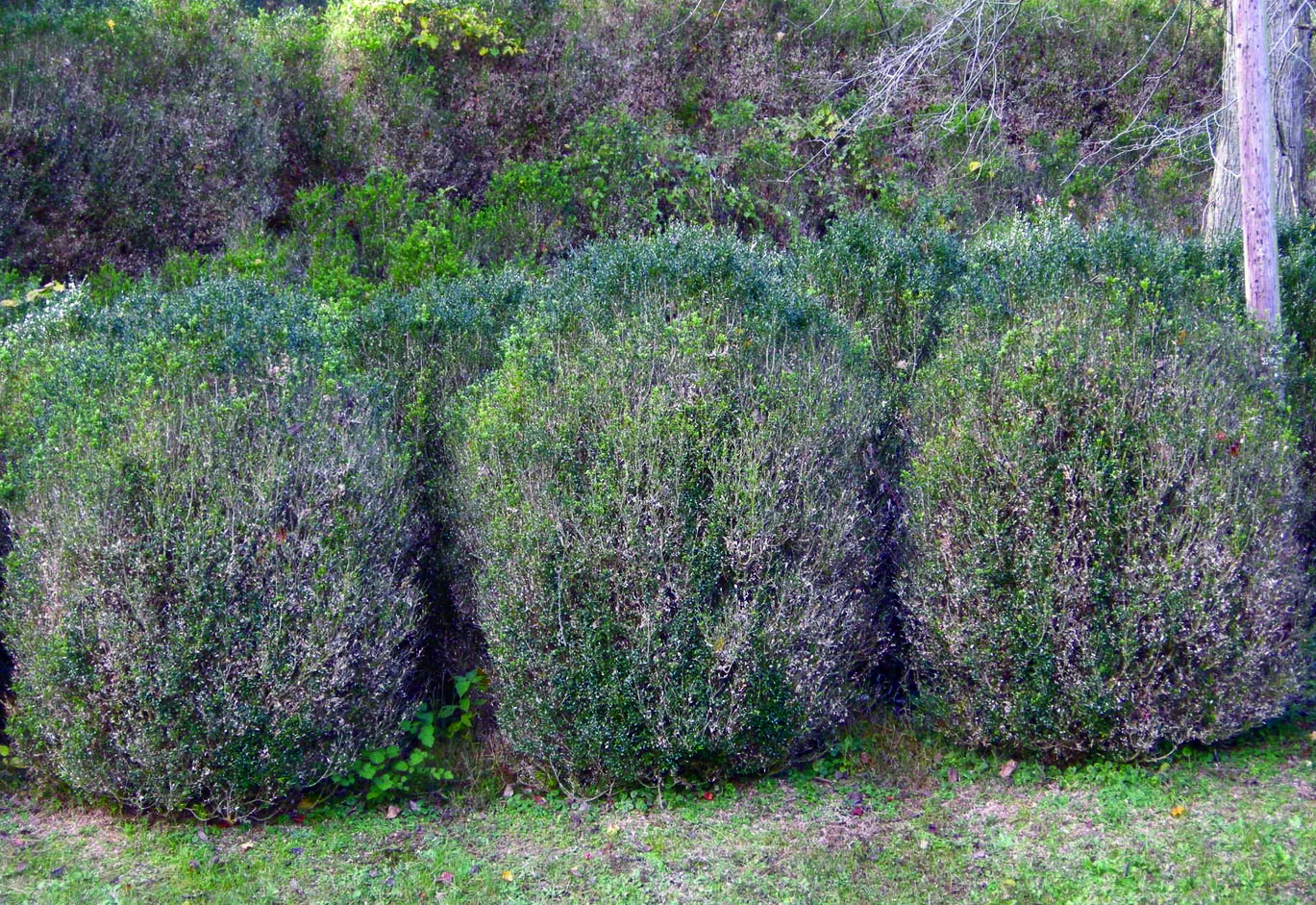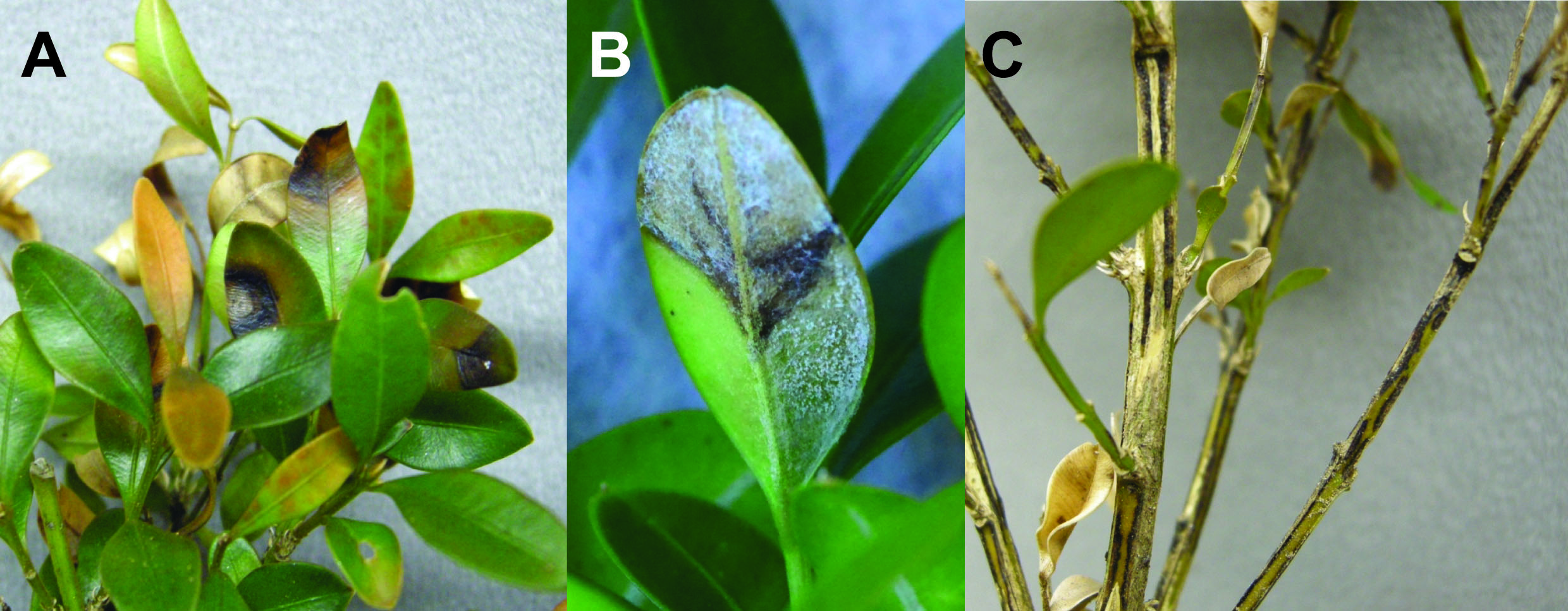Have a closer look at your boxwood wreaths this holiday season
Boxwood blight has been detected on boxwood wreaths in Michigan. Suspected plants can be examined by MSU Diagnostic Services, alternatively, they can be burned or double-bagged and disposed of in the trash.

Boxwood blight or “box blight” has been detected on boxwood wreaths in Michigan (Photo 1) according to a press release from the Michigan Department of Agriculture and Rural Development (MDARD). Boxwood blight is a serious fungal disease of boxwood caused by the fungal pathogen Calonectria pseudonaviculata (syn. = Cylindrocladium pseudonaviculatum and C. buxicola).
This fungus causes a devastating disease of boxwood and other plants in the Buxaceae family, which has resulted in the death and destruction of thousands of susceptible boxwood plants in the U.S. (Photo 2). Prior to 2018, Michigan was free of this disease, but unfortunately in 2018 there have been several reports of boxwood blight at multiple locations in Michigan, with three detections from Oakland County on both boxwood and Pachysandra from a landscaping firm, a homeowner’s yard and, just recently, on holiday wreaths sold in retail outlets.

When purchasing a boxwood wreath, take a closer look at the foliage and stems that make up the wreath. If you notice round, tan leaf spots with darker borders and potentially a yellow halo on the leaves, and black, elongated, streaking lesions on the stem, this may indicate boxwood blight is present (Photo 3). Sometimes, the underside of the leaves will have a white, frosty appearance caused by the formation of upright bundles of fungal spores.
Infected wreaths displayed outdoors close to boxwood plants can pose a risk, especially when water is present. The rainwater can move the fungal spores from the wreath to any nearby boxwood. Additionally, the spores can persist in the soil for many years. Wreaths displayed indoors pose little risk to the outside environment, so if you would like to display a boxwood wreath, it may be best to bring it indoors for the holiday season this year.

Take extra precautions when disposing of your wreaths this year. Wreaths should either be burned or double-bagged and placed in the trash for deposit in a landfill.
Once present, boxwood blight is difficult to eradicate. After detection, our best chance of managing this disease is to quickly remove and destroy the affected plant material. This can mean removing an infected boxwood wreath, a container plant or even an infected hedge and any associated plant debris on the ground.
If you suspect you have infected boxwood, contact the Michigan State University Diagnostic Services at pestid@msu.edu or517-432-0988. They will be able to assist with the diagnosis of the disease and provide best practice recommendations for the disposing the infected material. They may also ask you some questions to help us trace forward and trace back the diseased material; to identify where it has come from and where it may have been sent too. This “tracing” of material is one of the best ways we have of reducing the risk of disease spread.
Note the fungus that causes boxwood blight only affects plants in the Buxaceae family, so wreaths made from evergreens such as fir, spruce, pine and cedar will not contain the disease.
For more information on boxwood blight, see the information on the Boxwood Blight Image Gallery from Virginia Cooperative Extension.



 Print
Print Email
Email

